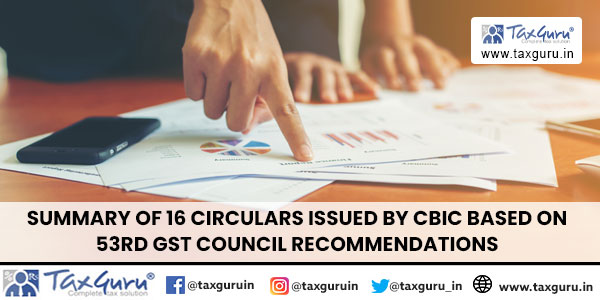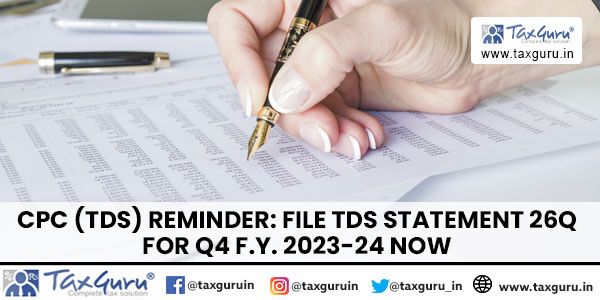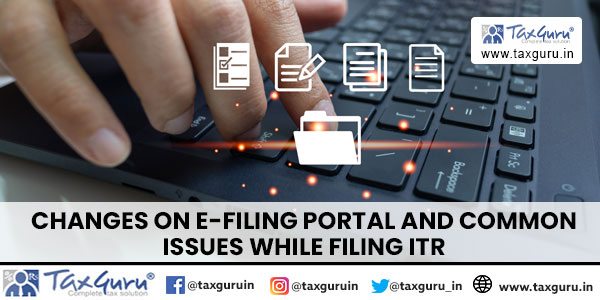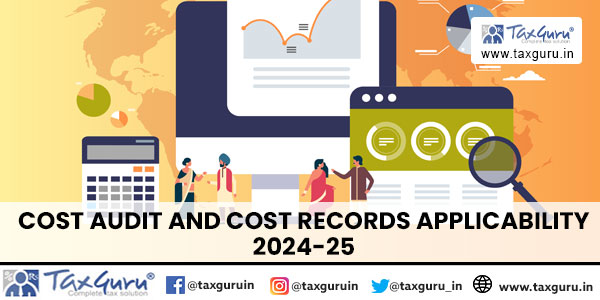Introduction:
“Capitalism without bankruptcy is like Christianity without hell” – Frank Borman
It’s not a cakewalk there for corporates. The inherent risks of business may make a corporate falter and flounder. It is essential for a healthy economy that the limping resources are quickly identified and addressed. The Insolvency and Bankruptcy Code aims at resuscitating an ailing corporate.
GST and Insolvency and Bankruptcy Code have almost a contemporary beginning. The Insolvency and Bankruptcy Code, 2016 (IBC) received the accent of the President on 28.05.2016. Various provisions of the Code have become applicable in 2017. The Insolvency and Bankruptcy Board has been established on 01.10.2016, clauses 2 (a) to 2 (d) of IBC, regarding applicability of IBC to Companies, LLPs, and other corporates (except with regard to voluntary liquidation or bankruptcy) were notified and brought into effect w.e.f 15.12.2016, and voluntary liquidation under the said clauses was introduced on 01.04.2017. These provisions were made applicable to personal guarantors, partnership firms, and other individuals with effect from 23.11.2017.
Goods and Service Tax was introduced w.e.f 01.07.2017.
IBC is christened as a Code because it consolidates and amends previous laws on the matter. GST also replaces various taxes with one tax. Both the laws have undergone significant amendments after their start to be in sync with business realities. GST Law has also been tweaked a few times to be in sync with IBC.
This Article focuses on the legal interface of these laws and emerging jurisprudence of this interface.
Part-I
Relevant provisions of IBC
The Object of IBC: As per Preamble of the Code, it aims at:
- insolvency resolution of corporate persons, partnership firms and individuals
- in a time bound manner
- for maximisation of value of assets of such persons,
- to promote entrepreneurship, availability of credit and
- balance the interests of all the stakeholders including alteration in the order of priority of payment of Government dues and
- to establish an Insolvency and Bankruptcy Board of India, and for matters connected therewith or incidental thereto.
The predominant objective of the Insolvency and Bankruptcy Code, 2016 is to see whether there are reasonable prospects for revival of the fortunes of the business. However, if the liquidation is inevitable, the IBC also aims to put the business in liquidation mode and liquidate the assets in a time bound manner.
Insolvency Resolution Process of Corporates
The heart of IBC lies in Part II of the Code dealing with Insolvency Resolution and Liquidation of Corporate Persons. This part applies to cases where the minimum amount of default is Rs. One Crore.[1] As per Section 6 of the IBC, where a corporate debtor commits a default, a financial creditor, an operational creditor or the corporate debtor itself may initiate corporate insolvency resolution process in respect of such corporate debtor in the prescribed manner[2].
It is important here to understand a few terms which are relevant for further discussion:
Financial Creditor: As per Section 5 (7) of the IBC, financial creditor means any person to whom a financial debt is owed and includes a person to whom the debt has been legally assigned or transferred to.
Operational Creditor: As per Section 5 (20), operational creditor means a person to whom an operational debt is owed and includes any person to whom such debt has been legally assigned or transferred.
Operational Debt: As per Section 5 (21), operational debt means a claim in respect of the provision of goods or services including employment or debt in respect of payment of dues arising under any law for the time being in force and payable to the Central Government, any State Government, or any local authority.
The process starts with an application by a financial creditor, or an operational creditor, or a corporate debtor before the Adjudicating Authority, that is, before National Company Law Tribunal (NCLT).
The Declaration of Moratorium and Public Announcement
If the aforesaid application is admitted by the NCLT, it shall:
- declare a moratorium for the purposes referred to in section 14 of IBC;
- cause a public announcement of the initiation of corporate insolvency resolution process and call for the submission of claims under section 15;
- appoint an interim resolution professional in the manner as laid down in section 16.
This kicks in the Corporate Insolvency Resolution Process (Popularly known as CIRP) in respect of the corporate debtor.
Moratorium
Thus, at the outset of the insolvency resolution, the IBC provides of ring-fencing of the further operations of the corporate debtor. The moratorium declared by NCLT under Section 14 of the IBC, shall prohibit the following:
- the institution of suits or continuation of pending suits or proceedings against the corporate debtor including execution of any judgment, decree or order in any court of law, tribunal, arbitration panel or other authority;
- transferring, encumbering, alienating or disposing of by the corporate debtor any of its assets or any legal right or beneficial interest therein;
- any action to foreclose, recover or enforce any security interest created by the corporate debtor in respect of its property including any action under the Securitisation and Reconstruction of Financial Assets and Enforcement of Security Interest Act, 2002;
- the recovery of any property by an owner or lessor where such property is occupied by or in the possession of the corporate debtor.
Public Announcement of CIRP
Section 15 of the IBC makes provision for the Public Announcement of CIRP. In particular, the announcement shall contain the details of the name and address of the corporate debtor, the last date for submission of claims, the details of Interim Resolution Professional (IRP) who shall be vested with the management of the corporate debtor and be responsible for receiving claims.
Interim Resolution Professional
The NCLT appoints an Interim Resolution Professional (IRP) on the insolvency commencement date. Usually the IRP proposed in the application of a financial creditor or an operational creditor is appointed as such. The management of the affairs of the company during this period vests in the IRP, and the powers of the Board of the Directors of the Corporate Debtor are exercised by the IRP. He shall be responsible for complying with the requirements under any law for the time being in force on behalf of the corporate debtor. He shall collect all information relating to assets, finances, and operations of the corporate debtor. He shall receive and collate all the claims submitted by the creditors in pursuance to Public Announcement mentioned above. He shall constitute a committee of creditors. He shall take control of assets of the corporate debtor. He shall manage the assets of the corporate debtor, and manage its operations as a going concern until a resolution professional is appointed by the Committee of Creditors.
Resolution Professional
The Committee of Creditors may, on its first meeting, either resolve to appoint the IRP as Resolution Professional or to replace the IRP with another Resolution Professional. The Resolution Professional shall conduct the entire insolvency resolution process and manage the operations of the corporate debtor during the CIRP period. It shall be the duty of the Resolution Professional to preserve and protect the assets of the corporate debtor, including the continued business operations of the corporate debtor. He shall represent and act on behalf of the corporate debtor with the third parties, exercise rights for the benefit of corporate debtor in judicial, quasi-judicial or arbitration proceedings. He shall also invite resolution applicants to submit a resolution plan or plans.
Resolution Plan
As per Section 30 of the IBC, a resolution applicant may submit a resolution plan to the resolution professional. The resolution professional shall examine each resolution plan received by him to confirm that the plan provides for the payment of debts of operational creditors in such manner as may be specified by the Insolvency and Bankruptcy Board which shall not be less than —
i. the amount to be paid to such creditors in the event of a liquidation of the corporate debtor under Section 53; or
ii. the amount that would have been paid to such creditors, if the amount to be distributed under the resolution plan had been distributed in accordance with the order of priority in sub-section (1) of section 53.
[It is noteworthy here that Section 53 of the IBC provides for order of priority of distribution of assets on liquidation; the Government dues, which are categorised as operational debts, are at a lower pedestal of priority even to unsecured financial debts.][3]
whichever is higher, and also provides for the payment of debts of the financial creditors, who do not vote in favour of the resolution plan, in the prescribed manner. The distribution is required to be fair and equitable to the creditors. Then Resolution Professional shall present the Resolution Plan to the committee of creditors for its approval. If passed by the Committee of Creditors, the Resolution Plan will be submitted to the adjudicating authority, that is, NCLT.
Further, as per Section 31 of IBC, if the NCLT is satisfied with the resolution plan, it shall by order approve the resolution plan which shall be binding on the corporate debtor and its employees, members, creditors, including the Central Government, any State Government or any authority to whom a debt is owed, guarantors, and other stakeholders involved in the plan.
Immunity to prior offences of Corporate Debtor
As per Section 32A of the IBC, inserted with effect from 28.12.2019, notwithstanding anything to the creditors contained in the Code or any other law for the time being in force, the liability of a corporate debtor for an offence committed prior to the commencement of the CIRP shall cease, and the corporate debtor shall not be prosecuted for such an offence from the date the resolution plan has been approved by NCLT. This immunity is not available to the liability of erstwhile ‘designated partner’ of LLP/ ‘officer who is in default’, or anyone who was in any way in charge of, or responsible to the corporate debtor.
Time Limit for CIRP
As per Section 12 of the IBC, the corporate insolvency resolution process shall be completed within a period of one hundred and eighty days from the date of admission of the application to initiate such process. This period can be extended by the Adjudicating Authority for ninety days on an application of Resolution Professional. But the CIRP is mandatorily required to be completed with 330 days from the insolvency commencement date.
Overriding effect of IBC
As per section 238 of the IBC, the provisions of this Code shall have effect, notwithstanding anything inconsistent therewith contained in any other law for the time being in force or any instrument having effect by virtue of any such law.
Corporate Liquidation Process
If the CIRP fails to yield a resolution plan, the liquidation process commences as mentioned in Chapter III of Part II of IBC. The Resolution Professional appointed for the CIRP typically acts as the liquidator for the purpose of liquidation. The liquidator makes a public announcement inviting claims and verifies them. He takes into his custody or control of all the assets of the CD and forms a liquidation estate. He endeavours to sell the assets of the liquidation estate through public auction, in consultation with the stakeholders’ consultation committee. He distributes the sale proceeds among the stakeholders as per the requirement of Section 53. On competition of liquidation process, the liquidator submits an application with the final report to the AA for closure of the liquidation process and dissolution of the Corporate Debtor.
Part-II
(Interface of IBC with GST)
1. An import decision on the matter was given NCLT in R. Ravichandran, RP v. Asst. Commissioner (ST) (NCLT)[4] in December, 2019. In this case, the Resolution Professional sought permission for the Corporate Debtor to have access to its GST Portal Account to file GST Returns during the period of CIRP and to allow the Applicant to pay the net GST liability from the date of commencement of CIRP till its completion disregarding non-payment of arrears dues of GST for the period prior to commencement of CIRP. It was contested by the respondent Department that the above reliefs cannot be granted because no provision has been set out in GST Act to accept current dues before clearing past dues. The NCLT held that:
i. [A] ny company once it has gone into CIRP can be obligated to pay the taxes from the date of initiation of CIRP.
ii. As to the dues of pre-admission period, the creditors, including Tax Authorities, are entitled to make a claim against the Corporate Debtor as mentioned in the Insolvency and Bankruptcy Code.
iii. In view thereof, if the Corporate Debtor’s GST Portal is blocked, it is difficult to the Corporate Debtor to generate bills falling within the ambit of GST and pay the taxes for the post-admission period.
iv. Since law is clear that Tax authorities fall within the ambit of the Operational Creditor, as to the pre-admission claims are concerned, they are at liberty to make their claims before the Resolution Professional instead of insisting upon the Resolution Professional to pay the pre-admission dues before accepting the tax liabilities arising during the CIRP period.
v. As to provisions of GST Act, since Section 238 of the Insolvency and Bankruptcy Code having categorically mentioned that IBC will have over riding effect on all other laws which are in contravention to the provisions of the IBC.
2. The Government of India issued notification 11/2020 CT dated 21.03.2020 which made corporate debtors undergoing CIRP as special class of persons and made provisions regarding special procedure for registration process, fling of return, and availment of ITC by the corporate debtors undergoing CIRP, as follows. This notification was amended vide Notification No. 39/2020-C.T., dated 5-5-2020. The combined effect is as follows[5]:
i. Registration. – The said class of persons shall, with effect from the date of appointment of IRP/RP, be treated as a distinct person of the corporate debtor, and shall be liable to take a new registration (hereinafter referred to as the new registration) in each of the States or Union territories where the corporate debtor was registered earlier, within thirty days of the appointment of the IRP/RP or by 30th June, 2020, whichever is later[6].
ii. Return. – The said class of persons shall, after obtaining registration file the first return under section 40 of the said Act, from the date on which he becomes liable to registration till the date on which registration has been granted.
iii. Input tax credit. – (1) The said class of persons shall, in his first return, be eligible to avail input tax credit on invoices covering the supplies of goods or services or both, received since his appointment as IRP/RP[7] but bearing the GSTIN of the erstwhile registered person, subject to the conditions of Chapter V of the said Act and the rules made thereunder, except the provisions of sub-section (4) of section 16 of the said Act and sub-rule (4) of rule 36 of the Central Goods and Service Tax Rules, 2017 (hereinafter referred to as the said rules).
iv. Registered persons who are receiving supplies from the said class of persons shall, for the period from the date of appointment of IRP/RP till the date of registration, be eligible to avail input tax credit on invoices issued using the GSTIN of the erstwhile registered person, subject to the conditions of Chapter V of the said Act and the rules made thereunder, except the provisions of sub-rule (4) of rule 36 of the said rules.
v. Any amount deposited in the cash ledger by the IRP/RP, in the existing registration, from the date of appointment of IRP/RP to the date of registration in terms of this notification shall be available for refund to the erstwhile registration.
3. The CBIC has issued Circular No. 138/08/2020-GST, dated 6-5-2020 providing clarification on this aspect. CBIC clarified that in those cases where statements in FORM GSTR-1 under section 37 and returns in FORM GSTR-3B under section 39 of the CGST Act, for all the tax periods prior to the appointment of IRP/RP, have been furnished under the registration of Corporate Debtor (earlier GSTIN), IRP/RP would not be required to take a fresh registration, meaning thereby that in case the Corporate Debtor is already fully compliant in filing these statutory returns, it can continue as the same person for GST purposes notwithstanding it is now undergoing CIRP process.
4. The CBIC has also issued Circular No. 134/04/2020-GST, dated 23-3-2020 wherein it has inter alia clarified as follows:
| S. No. | Issue | Clarification |
| 1. | How are dues under GST for pre-CIRP period be dealt? | In accordance with the provisions of the IBC and various legal pronouncements on the issue, no coercive action can be taken against the corporate debtor with respect to the dues for period prior to insolvency commencement date. The dues of the period prior to the commencement of CIRP will be treated as ‘operational debt’ and claims may be filed by the proper officer before the NCLT in accordance with the provisions of the IBC. The tax officers shall seek the details of supplies made/received and total tax dues pending from the corporate debtor to file the claim before the NCLT.
Moreover, section 14 of the IBC mandates the imposition of a moratorium period, wherein the institution of suits or continuation of pending suits or proceedings against the corporate debtor is prohibited. |
| 2. | Should the GST registration of corporate debtor be cancelled? | It is clarified that the GST registration of an entity for which CIRP has been initiated should not be cancelled under the provisions of section 29 of the CGST Act, 2017. The proper officer may, if need be, suspend the registration. In case the registration of an entity undergoing CIRP has already been cancelled and it is within the period of revocation of cancellation of registration, it is advised that such cancellation may be revoked by taking appropriate steps in this regard[8]. |
| 3. | Is IRP/RP liable to file returns of pre-CIRP period? | No. In accordance with the provisions of IBC, 2016, the IRP/RP is under obligation to comply with all legal requirements for period after the Insolvency Commencement Date. Accordingly, it is clarified that IRP/RP are not under an obligation to file returns of pre-CIRP period. |
5. Intimation of Liquidation to GST Authority
As per Section 88 of the CGST Act, when any company is being wound up whether under the orders of a court or Tribunal or otherwise, the liquidator, shall, within thirty days after his appointment, give intimation of his appointment to the Commissioner. The Commissioner shall notify the liquidator within three months from the date on which he receives intimation of the appointment of the liquidator, the amount which in the opinion of the Commissioner would be sufficient to provide for any tax, interest or penalty which is then, or is likely thereafter to become, payable by the company. When any private company is wound up and any tax, interest or penalty determined under this Act on the company for any period, whether before or in the course of or after its liquidation, cannot be recovered, then every person who was a director of such company at any time during the period for which the tax was due shall, jointly and severally, be liable for the payment of such tax, interest or penalty, unless he proves to the satisfaction of the Commissioner that such non-recovery cannot be attributed to any gross neglect, misfeasance or breach of duty on his part in relation to the affairs of the company.
6. Waterfall of priorities under IBC and Recognition of this Principle in GST
It is noteworthy here that Section 53 of the IBC provides for order of priority of distribution of assets on liquidation, and the Government dues, which are categorised as operational debts, are lower in priority to wages and financial debts. This arrangement is often referred as waterfall of priorities.[9] The Government has placed itself beneath the unsecured financial creditors in the waterfall. This is arrangement is also relevant for the purpose of resolution process as discussed above. This is echoed in Section 82 of the CGST Act, 2017, which subordinates GST dues to IBC arrangement:
SECTION 82. Tax to be first charge on property. — Notwithstanding anything to the contrary contained in any law for the time being in force, save as otherwise provided in the Insolvency and Bankruptcy Code, 2016 (31 of 2016), any amount payable by a taxable person or any other person on account of tax, interest or penalty which he is liable to pay to the Government shall be a first charge on the property of such taxable person or such person.
Thus IBC has placed the crown debt, which is usually the first charge, at a lower priority to the financial creditors. This is also reflected in Preamble of the IBC, 2016 as, “[To] balance the interests of all the stakeholders including alteration in the order of priority of payment of Government dues”.
The constitutional validity of Section 53 of IBC was challenged at the budding stage of the IBC in Swiss Ribbons Pvt. Ltd. v. Union of India[10]. It was contested that in the event of liquidation, operational creditors will never get anything as they are rank below all other creditors, including other unsecured creditors who happen to be financial creditors. The Supreme Court referred to Bankruptcy Law Reforms Committee Report dated 04.11.2015, and held that:
“…the reason for differentiating between financial debts, which are secured, and operational debts, which are unsecured, is in the relative importance of the two types of debts when it comes to the object sought to be achieved by the Insolvency Code. We have already seen that repayment of financial debts infuses capital into the economy inasmuch as banks and financial institutions are able, with the money that has been paid back, to further lend such money to other entrepreneurs for their businesses. This rationale creates an intelligible differentia between financial debts and operational debts, which are unsecured, which is directly related to the object sought to be achieved by the Code. … so long as there is some legitimate interest sought to be protected, having relation to the object sought to be achieved by the statute in question, Article 14 does not get infracted. For these reasons, the challenge to Section 53 of the Code must also fail”
Further, the question of non-recoverability of the exact adjudged dues in customs and central excise matters after the approval of resolution plan in IBC came before CESTAT in Ultratech Nathdwara Cement Ltd. v. Commr. Of Cus., Jamnagar (Prev.) [2022 (382) E.L.T. 660 (Tri. – Ahmd.)], and the Tribunal observed that there is no provision made in the Customs Act and Central Excise Act to give effect of the NCLT proceedings, and this issue has to be resolved by the Department.
The CBIC vide Circular No. 187/19/2022-GST, dated 27-12-2022 has sought to address this question regarding the confirmed demands under GST and other existing laws and the amount settled under IBC. The Circular refers to Section 84 of the CGST Act which provides for reduced recovery “where such Government dues are reduced in such appeal, revision or in other proceedings”. The CBIC explained the expression “ other proceedings” in Section 84 as follows:
“As the proceedings conducted under IBC also adjudicate the government dues pending under the CGST Act or under existing laws against the corporate debtor, the same appear to be covered under the term ‘other proceedings’ in Section 84 of CGST Act.”
7. Effect of Moratorium on Assessment Etc.
As described above, the cardinal step in the CIRP is the ring-fencing of the further operations of the corporate debtor after admission of the application by the NCLT. A calm period is allowed to enable the stakeholders to work out a resolution peacefully and the CD continues as a going concern. As per section 14 of the IBC, the institution of suits or continuation of pending suits or proceedings against the corporate debtor including execution of any judgment, decree or order in any court of law, tribunal, arbitration panel or other authority is prohibited. The exact scope of this moratorium is an area of interpretational polemics. In Associate Decor Ltd. v. Deputy Commissioner of Commercial Taxes, Bengaluru [2022 (67) G.S.T.L. 534 (Kar.)], the petitioner had sought quashing of Audit proceedings initiated u/s 65 and show cause notice under Section 74 read with Section 65 read with Section 50 and Section 122 of the KGST Act and CGST Act The Karnataka High Court held that that in view of the specific embargo/bar contained in Section 14 of the IBC, the proceedings initiated by the respondent pursuant to the impugned notices deserve to be stayed/suspended/kept in abeyance till conclusion of the proceedings before the NCLT and appeal(s) to be filed, if any, and only after lifting of the moratorium and completion of the corporation insolvency resolution process. The Karnataka High Court in its decision referred to earlier decisions of the Apex Court and Madras High Court. There are some other judgements to the similar effect. However, in Sundaresh Bhatt v. C.B.I. & C. 2022 (381) E.L.T. 731 (S.C.), the Supreme Court held that:
i. Once moratorium is imposed in terms of Section 14 or 33(5) of the IBC as the case may be, the respondent authority only has a limited jurisdiction to assess/determine the quantum of customs duty and other levies. The respondent authority does not have the power to initiate recovery of dues by means of sale/confiscation, as provided under the Customs Act.
ii. After such assessment, the respondent authority has to submit its claims (concerning customs dues/operational debt) in terms of the procedure laid down, in strict compliance of the time periods prescribed under the IBC, before the adjudicating authority.
iii. In any case, the IRP/RP/liquidator can immediately secure goods from the respondent authority to be dealt with appropriately, in terms of the IBC.
Although the decision is in the customs matters, but the fact remains that the Apex Court did not bar the continuation of assessment proceedings. These conflicting judgments leave a gaping grey on the issue of assessment proceedings during moratorium. In fact number of such judgments on income tax side is more than on GST side. It would be in the fitness of things if this grey is put in black and white, or maybe, it would escalate again up to the Apex Court seeking a final verdict on the matter.
Interestingly, in Kosamattam Finance Ltd. case [2023 (8) TMI 176], the GST department raided the corporate debtor after the moratorium was announced and seized some documents, NCLT Kochi held that the search and seizure of the records of the corporate debtor and issuance of summons to the Resolution Professional are violative of the moratorium declared under section 14 of the IBC. The respondent was ordered to pay Rs. 50,000/- as compensation cost to the applicant. Such unsavoury incidents can be avoided, if there is more timely clarifications and sensitisations on the matter.
Though the author is of the view there should not be any bar on pending assessments during moratorium, yet there are practical aspects of the claims of the Revenue after the initiation of moratorium. The claims of revenue, as observed, above are an operational debt. The operational debt will not crystallise till Revenue proceedings attain some finality[11]. On the other hand CIRP is a time bound process, the claims of Revenue may not crystallise so quickly resulting into a nugatory exercise or projection of some inflated demand. The claims may get barred by limitation even before these are ascertained. Such unenforceable claims would be worse that pre-demonetisation currency, better not to have it rather than have it.
The Supreme Court in Ghanashyam Mishra and Sons Private Ltd. v. Edelweiss Asset Reconstruction Company Ltd[12] held that “On the date of approval of resolution plan by the Adjudicating Authority, all such claims, which are not a part of resolution plan, shall stand extinguished and no person will be entitled to initiate or continue any proceedings in respect to a claim, which is not part of the resolution plan”. Similar findings have been given by the Supreme Court in Ruchi Soya Industries Ltd. v. Union of India [2022 (380) E.L.T. 8 (S.C.)], wherein the Apex Court in customs matter held that consequent to approval of Resolution Plan by NCLT under IBC, all claims stood frozen, and no claim, which is not a part of the Resolution Plan, would survive.
In GGS Infrastructure Pvt. Ltd.v. Commr. of CGST & Central Excise [2021 (51) G.S.T.L. 187 (Bom.)], the matter pertained to a Service Tax demand from a company against which corporate insolvency resolution plan sanctioned by NCLT. The NCLT directed settlement of dues of Department at 5% of principal adjudicated demand and waiver of interest, penal interest and penalties. The Adjudicating authority, in service tax, while passing order subsequent to order of NCLT confirmed Service Tax demand/principal adjudicated demand of 7,02,20,725 and appropriated against it an amount of 6,23,82,214 already recovered from company under Section 87 of Finance Act, 1994 . It was held by High Court that the NCLT Order sanctioning insolvency resolution plan is binding on all concerned including Department. It was held that the Department entitled to realize only 5% of principal adjudicated amount of 7,02,20,725 and to refund amount recovered in excess thereof.
The CIRP will have ramifications for even pending litigations. In a recent Service Tax matter in Mc Nally Sayaji Engineering Ltd. v. Commissioner of CGST & C.Ex, Bolpur [ 2023 (385) ELT 415], the Kolkatta Bench of Tribunal held that “from the date of Resolution Plan by the NCLT, the Appeal filed by the Appellant has abated and the Tribunal has become functus officio in the matters relating to appeal. Further, it is also settled that the Order-in-Appeal has got merged in the order of the NCLT approving the Resolution Plan”. The decision may have implications for similar matters pending at various levels.
Conclusion: From the above, it is apparent that GST Laws (as also other tax laws) are being synced with the IBC. Nevertheless, the overriding effect of IBC over other laws is obvious. New jurisprudence on the issue is emerging and is being adjusted to by all stakeholders. The tax authorities are also responding to the emerging issues. Still, better sensitisation, anticipation of grey areas, and quick responses can help resolve interface issues at an early stage.
[1] Section 4 of IBC read with S.O 1205 (E) dated 24th March 2020.
[2] The manner as provided in Chapter II of Part II of IBC
[3] As per Explanation (i) to Section 53, at each stage of the distribution of proceeds in respect of a class of recipients that rank equally, each of the debts will either be paid in full, or will be paid in equal proportion within the same class of recipients, if the proceeds are insufficient to meet the debts in full
[4] https://taxguru.in/goods-and-service-tax/provision-ibc-overrides-gst-nclt.html
[5] “Provided that the said class of persons shall not include those corporate debtors who have furnished the statements under section 37 and the returns under section 39 of the said Act for all the tax periods prior to the appointment of IRP/RP”- added by the Notification No. 39/2020-C.T., dated 5-5-2020
[7] The ITC, if any, in the ledger of the CD seems prima facie not covered in this.
[8] Meanwhile, an Explanation was also inserted in Section 14 (1) of the IBC, w.e.f. 28.12.2019, that notwithstanding anything in any other law any licence, permit, registration etc. shall not be terminated on the grounds of insolvency, provided there is no default of current dues.
[9] The stakeholders placed higher in priority get paid first, and the claims of the set of stakeholders placed next in priority are considered only if there is any surplus after fully satisfying the claims of the prior set of stakeholders. (IBBI Note : Facilitation / 004 / 2020 12th September, 2020)
[10] https://indiankanoon.org/doc/17372683/
[11] CBIC Instruction No. 1083/04/2022-CX9 dated 23.05.2022 provides a mechanism to keep a tab on “arrears”.
[12] https://taxguru.in/corporate-law/extinguishment-liabilities-post-approval-resolution-plan.html
*****
Disclaimer: The views, thoughts, and opinions expressed in the text belong solely to the author and are purely for academic purposes; these are not legal opinion of any sort. For any query, the author can be reached at viney.go@gmail.com

























